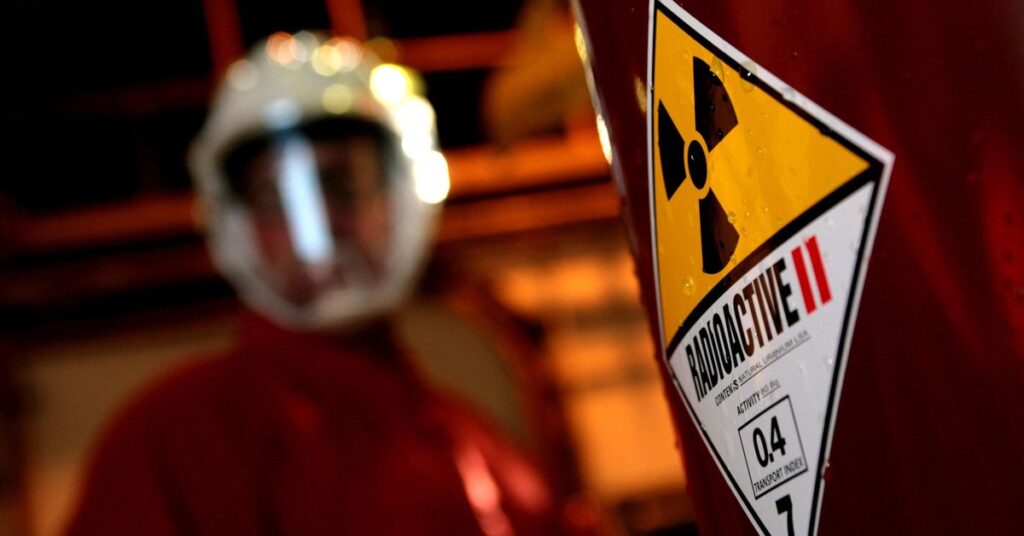Next-generation nuclear reactors are fueling debate over whether their fuel can be used to make bombs, jeopardizing efforts to prevent nuclear weapons proliferation.
In theory, the uranium in the fuel could be used to develop nuclear weapons. Older reactors use such low concentrations They don’t really pose a weapons proliferation threat. But some experts warn that advanced reactors will use higher concentrations, making them potential targets for terrorist groups or other countries that want to use the fuel to develop their own nuclear weapons.
They argue that the United States is not sufficiently prepared to deal with the worst-case scenario and call on Congress and the Department of Energy to assess the potential safety risks of advanced reactor fuels.
Some experts believe the U.S. is not well prepared for the worst-case scenario
Other experts and industry groups still believe this worst-case scenario is unlikely to happen. But as nuclear reactors become a more attractive energy source and gain rare bipartisan support in Congress, the issue is starting to come to a head.
Nuclear reactors produce electricity without producing greenhouse gas emissions that contribute to climate change. Unlike solar and wind power, which fluctuate with weather and time of day, nuclear reactors provide a stable source of electricity similar to natural gas and coal-fired power plants. Earlier this month, President Joe Biden signed bipartisan legislation aimed at speeding up the development of the next generation of U.S. nuclear reactors by streamlining the approval process.
Next-generation reactors are smaller and more modular, meaning they are cheaper and easier to build than older nuclear power plants. In addition to generating electricity, small reactor designs can be used to generate high-temperature heat for industrial facilities.
The U.S. Nuclear Regulatory Commission (NRC) certified an advanced small modular reactor design for the first time last year. It could be years before we see a commercial plant operational. But if the United States wants to achieve this goal, it must also establish a supply chain for the fuel consumed by these advanced reactors. The Inflation Reduction Act includes $700 million to develop domestic fuel supplies.
Today’s reactors typically use fuel made from a uranium isotope called U-235. The concentration of U-235 in naturally occurring uranium is quite low; it must be “enriched” – typically up to 5% for conventional reactors. Smaller advanced reactors will use more energy-dense fuels enriched in 5 to 20 percent U-235, called HALEU (short for high-enriched low-enriched uranium).
Some experts worry about this higher concentration. A policy analysis published in the journal by a group of nuclear proliferation experts and engineers said: “If HALEU’s weapons availability is confirmed, even a single reactor would pose serious security concerns.” science last month (including an author considered one of the designers of the first hydrogen bomb).
Fuel with a concentration of at least 20% is considered highly enriched uranium and can be used to develop nuclear weapons. The author believes that with the U-235 content of HALEU design reaching 19.75%, it is time for the United States to seriously think about the security of next-generation nuclear reactors against malicious attacks.
“We need to make sure we don’t get bogged down here and make sure all the security and safety measures are in place before we go out and start sending. [HALEU] “Across the country,” said R. Scott Kemp, associate professor of nuclear science and engineering and director of the MIT Nuclear Security and Policy Laboratory.
Camp and his co-authors wrote in the paper that the 20 percent threshold dates back to the 1970s, when bad actors ostensibly had more information and computing tools to develop weapons. The paper says it is even possible to build a bomb with HALEU well below the 20% threshold.
“This was not petty theft.”
Fortunately, this is still very difficult. “This is not petty theft,” said Charles Forsberg, a principal research scientist at MIT and a former researcher at Oak Ridge National Laboratory. He said an organization may need to steal from a small advanced reactor for several years. fuel to create the type of bomb described in the paper.
Even with a viable weapon design, he said, it would require a complex team of at least several hundred people to go through all the steps to convert the fuel into uranium metal for a viable weapon. “Unless they are much better than me and the colleagues I work with, a local group [like a terrorist group] No chance,” he told edge.
A hostile state has more capabilities than a small group. But he still doesn’t think it’s worth it for them. With their resources, they could go ahead and build a plant to produce weapons-grade uranium, typically U-235 enriched to over 90%.
A more credible risk, he said, is if another country starts producing and stockpiling HALEU for future reactors but actually has more nefarious intentions. Once they enriched uranium for HALEU, they had already begun building up their ability to produce weapons-grade uranium. “That’s the concern we have with any nation-state that decides to produce HALEU,” Forsberg said. “They’ve taken some steps … they’re getting closer to the line.”
In addition to asking Congress to conduct an updated safety assessment of HALEU, the document also recommends setting lower uranium enrichment limits based on new research or strengthening HALEU’s safety measures to more closely match the safety measures of weapons-usable fuel.
Unlike the author of the book science Forsberg believes that the United States has taken appropriate precautions to ensure the safety of next-generation nuclear reactors and HALEU. He said security risks have been well understood and discussed for decades, even though much of it was classified information. That’s part of the reason it’s so hard to ease fears.
“The opinion of the authors of this study does not provide any new information that would hinder the development and deployment of HALEU in accordance with the stringent requirements already established by U.S. and international regulatory agencies,” said Jennifer Uhle, vice president of technology and regulatory services at the Nuclear Energy Institute said in an emailed statement edge.
After the Chernobyl disasters in 1986 and Fukushima in 2011, some concerns about nuclear power have receded, driven by the need to find energy sources that do not contribute to climate change and the promise of more advanced technology. But not everyone is convinced that HALEU’s sudden safety concerns fit with other issues critics have raised about nuclear power.
“Unless there is a good reason to switch to fuels that pose greater proliferation risks, pursuing these fuels is Irresponsible. Lehmann has also expressed concern about radioactive waste from nuclear reactors for many years. “There is no good reason. “

